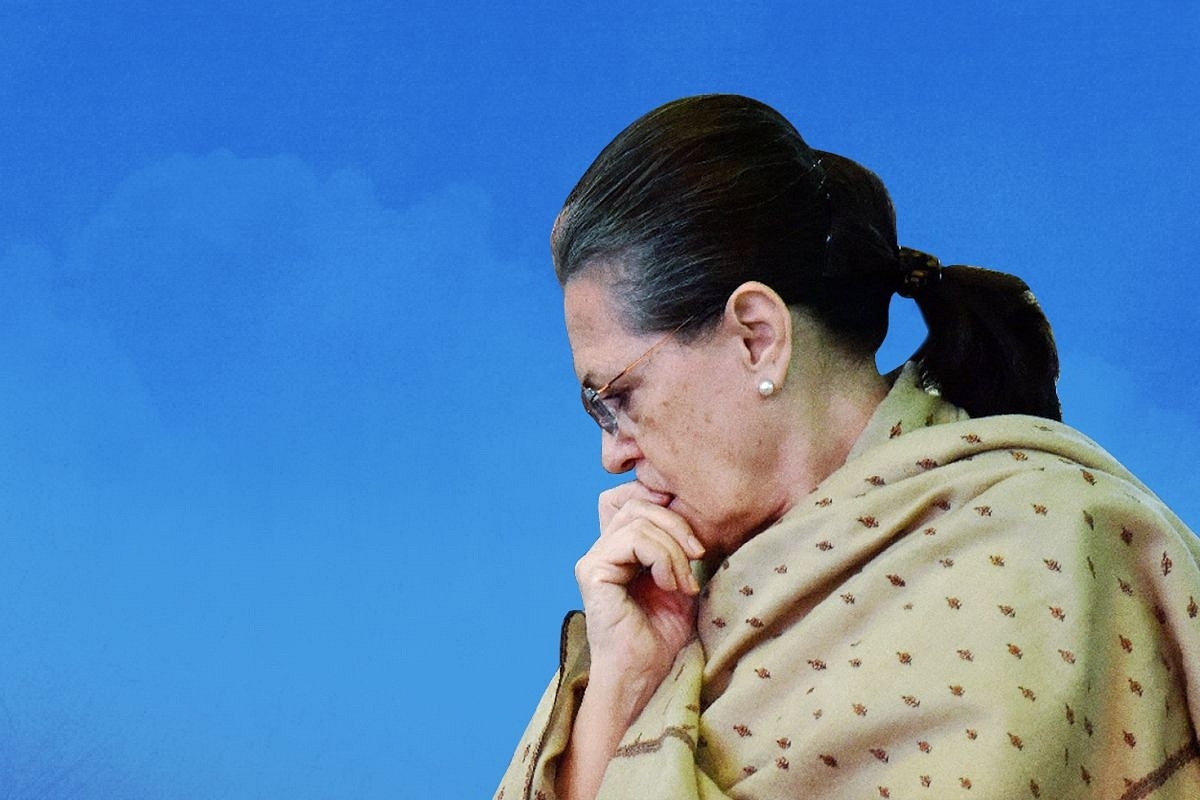Politics
How Sonia Gandhi’s Daft Idea Of Cutting Government Advertising Has Alienated Her Own ‘Godi’ Media
- Given the Covid-related corporate trimming of discretionary expenses, media is one of the worst affected as advertising is held back.
- Some media houses are already cutting staff and salaries. What Sonia has suggested was a scheme to perform their last rites.

Congress president Sonia Gandhi.
If Sonia Gandhi wanted 100 per cent alienation from the media, most of whom have been favourably disposed towards her for the last two decades, she could not have done better than to call for a ban on government and public sector advertising for two years.
Offering five suggestions for austerity in the time of Covid-19, Sonia Gandhi asked for a “complete ban on media advertisements – television, print and online – by the government and public sector undertakings for two years and issue only Covid-19 related advisories.” The media world reacted with anger and horror. Both TV and print organisations condemned her proposal unequivocally (read here and here).
In the process, she has exposed two realities: one, that large sections of the media are practically non-viable without government advertising, especially during a serious downturn; and two, the basis of media’s long-term support for the Gandhi family has less to do with ideology and secularism and more with the kind of economic support the media got under her dispensation.
If she wanted to shoot herself in the foot, she could not have done it better.
After Narendra Modi came to power, the media has been sharply polarised between those who are willing to judge the government fairly, and those who think Modi can do no right no matter what he does.
What Sonia Gandhi has done is to force both media groups to close ranks in defence of their economic interests.
Barring some exceptions, Indian media has been on the ropes for several years. The realities are the following:
(1) A third of the media is politically-exposed, and its viability depends on politicians in power doing them special favours. It follows that when a particular party is not in power, the media aligned to it will starve for funds.
(2) Given the huge differential between production costs and revenues from subscriptions (for newspapers, cover prices barely meet 25-30 per cent of paper and production costs, leave alone overheads), advertising is key to survival.
(3) In an era of huge fragmentation in media and the rise of digital publications, print and TV channels have little bargaining power with advertisers. This makes government advertising – Rs 1,250 crore annually by the Centre – the key to keeping heads above water. Even business papers and channels, who don’t have to deliver huge viewerships in order to command premium advertising, rely a lot on statutory ads (like the compulsory publication of quarterly and annual corporate results, periodic mutual fund disclosures, public sector tender notices, etc).
Given the media’s financial precariousness, one wonders who advised Sonia Gandhi to make this huge mistake, which has united the media favourable to her with those who are against her.
She clearly did not put her thinking cap on before she put this suggestion out. Two reasons why.
One, when the country is in shutdown mode and every sector is haemorrhaging revenue, it is daft to ask the government to cut costs, except costs relating to the better off (like cutting MP and ministerial salaries). At a time when her own think tank is calling for huge public sector spending increases, she is calling for cutting government expenditures.
Two, in the fight against Covid-19, the media is going to play a huge part. This is not only because health-related information has to be disseminated to the whole population, but also because people are stuck in homes. It is logical to keep them informed and entertained as much as possible so that they stay indoors.
This is why even Doordarshan decided to re-run the hugely popular Ramayan and Mahabharat serials, despite carping voices from Sonia Gandhi’s party. DD has never had the kind of advertising support in recent times, and the decision has been a commercial success.
If DD is a government-owned media house, the only media Sonia Gandhi can hope to get support from was the private sector media. Given the Covid-related corporate trimming of discretionary expenses, media is one of the worst affected as advertising is held back. Some media houses are already cutting staff and salaries. What Sonia has suggested was a scheme to perform their last rites.
Clever, really clever.
Introducing ElectionsHQ + 50 Ground Reports Project
The 2024 elections might seem easy to guess, but there are some important questions that shouldn't be missed.
Do freebies still sway voters? Do people prioritise infrastructure when voting? How will Punjab vote?
The answers to these questions provide great insights into where we, as a country, are headed in the years to come.
Swarajya is starting a project with an aim to do 50 solid ground stories and a smart commentary service on WhatsApp, a one-of-a-kind. We'd love your support during this election season.
Click below to contribute.
Latest